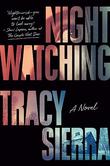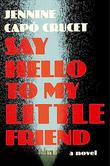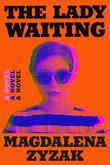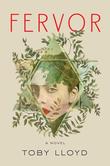
by Ed Yong ‧ RELEASE DATE: June 21, 2022
One of the year’s best popular natural histories.
Awards & Accolades
Our Verdict

GET IT
Kirkus Reviews'
Best Books Of 2022
Kirkus Prize
finalist
New York Times Bestseller
National Book Critics Circle Finalist
An ingenious account of how living organisms perceive the world.
In his 1974 essay, “What Is It Like To Be a Bat?” philosopher Thomas Nagel argued that other animals experience a world utterly foreign to us, one nearly impossible to describe. In this follow-up to I Contain Multitudes, Yong, a staff reporter for the Atlantic who won a Pulitzer in 2021 for his reporting on Covid-19, mostly follows the traditional popular science format (travel the world, interview experts), but he takes a different, realistic, and utterly fascinating approach, emphasizing that every organism perceives only a tiny slice of the world accessible to its senses. A tick searching for blood is exquisitely sensitive to body heat, the touch of hair, and the odor of butyric acid from skin. The tick doesn’t willfully ignore the surrounding plants and animals; it doesn’t know that they exist. This involves the zoological term umwelt, the German word for environment that refers to what an animal can sense: its perceptual world. The human umwelt includes excellent vision, tolerable hearing, mediocre smell (but better than dog enthusiasts claim), some chemical sensitivity (mostly in the nose and taste buds), a touch of echolocation, and no ability to detect electromagnetic fields. In a dozen chapters, Yong delivers entertaining accounts of how animals both common and exotic sense the world as well as the often bizarre organs that enable them to do so. “There are animals with eyes on their genitals, ears on their knees, noses on their limbs, and tongues all over their skin,” writes the author. “Starfish see with the tips of their arms, and sea urchins with their entire bodies. The star-nosed mole feels around with its nose, while the manatee uses its lips.” Building on Aristotle’s traditional five senses, Yong adds expert accounts of 20th-century discoveries of senses for echoes, electricity, and magnetism as well as perceptions we take for granted, including color, pain, and temperature.
One of the year’s best popular natural histories.Pub Date: June 21, 2022
ISBN: 978-0-593-13323-1
Page Count: 464
Publisher: Random House
Review Posted Online: April 12, 2022
Kirkus Reviews Issue: May 1, 2022
Share your opinion of this book
More by Ed Yong
BOOK REVIEW
by Ed Yong
More About This Book
PERSPECTIVES

by Amy Tan ; illustrated by Amy Tan ‧ RELEASE DATE: April 23, 2024
An ebullient nature lover’s paean to birds.
A charming bird journey with the bestselling author.
In his introduction to Tan’s “nature journal,” David Allen Sibley, the acclaimed ornithologist, nails the spirit of this book: a “collection of delightfully quirky, thoughtful, and personal observations of birds in sketches and words.” For years, Tan has looked out on her California backyard “paradise”—oaks, periwinkle vines, birch, Japanese maple, fuchsia shrubs—observing more than 60 species of birds, and she fashions her findings into delightful and approachable journal excerpts, accompanied by her gorgeous color sketches. As the entries—“a record of my life”—move along, the author becomes more adept at identifying and capturing them with words and pencils. Her first entry is September 16, 2017: Shortly after putting up hummingbird feeders, one of the tiny, delicate creatures landed on her hand and fed. “We have a relationship,” she writes. “I am in love.” By August 2018, her backyard “has become a menagerie of fledglings…all learning to fly.” Day by day, she has continued to learn more about the birds, their activities, and how she should relate to them; she also admits mistakes when they occur. In December 2018, she was excited to observe a Townsend’s Warbler—“Omigod! It’s looking at me. Displeased expression.” Battling pesky squirrels, Tan deployed Hot Pepper Suet to keep them away, and she deterred crows by hanging a fake one upside down. The author also declared war on outdoor cats when she learned they kill more than 1 billion birds per year. In May 2019, she notes that she spends $250 per month on beetle larvae. In June 2019, she confesses “spending more hours a day staring at birds than writing. How can I not?” Her last entry, on December 15, 2022, celebrates when an eating bird pauses, “looks and acknowledges I am there.”
An ebullient nature lover’s paean to birds.Pub Date: April 23, 2024
ISBN: 9780593536131
Page Count: 320
Publisher: Knopf
Review Posted Online: Jan. 19, 2024
Kirkus Reviews Issue: Feb. 15, 2024
Share your opinion of this book
More by Amy Tan
BOOK REVIEW
by Amy Tan
BOOK REVIEW
by Amy Tan
BOOK REVIEW
by Amy Tan
More About This Book
Awards & Accolades
Likes

47
Our Verdict

GET IT
Kirkus Reviews'
Best Books Of 2023
New York Times Bestseller

by Walter Isaacson ‧ RELEASE DATE: Sept. 12, 2023
Alternately admiring and critical, unvarnished, and a closely detailed account of a troubled innovator.
Awards & Accolades
Likes

47
Our Verdict

GET IT
Kirkus Reviews'
Best Books Of 2023
New York Times Bestseller
A warts-and-all portrait of the famed techno-entrepreneur—and the warts are nearly beyond counting.
To call Elon Musk (b. 1971) “mercurial” is to undervalue the term; to call him a genius is incorrect. Instead, Musk has a gift for leveraging the genius of others in order to make things work. When they don’t, writes eminent biographer Isaacson, it’s because the notoriously headstrong Musk is so sure of himself that he charges ahead against the advice of others: “He does not like to share power.” In this sharp-edged biography, the author likens Musk to an earlier biographical subject, Steve Jobs. Given Musk’s recent political turn, born of the me-first libertarianism of the very rich, however, Henry Ford also comes to mind. What emerges clearly is that Musk, who may or may not have Asperger’s syndrome (“Empathy did not come naturally”), has nurtured several obsessions for years, apart from a passion for the letter X as both a brand and personal name. He firmly believes that “all requirements should be treated as recommendations”; that it is his destiny to make humankind a multi-planetary civilization through innovations in space travel; that government is generally an impediment and that “the thought police are gaining power”; and that “a maniacal sense of urgency” should guide his businesses. That need for speed has led to undeniable successes in beating schedules and competitors, but it has also wrought disaster: One of the most telling anecdotes in the book concerns Musk’s “demon mode” order to relocate thousands of Twitter servers from Sacramento to Portland at breakneck speed, which trashed big parts of the system for months. To judge by Isaacson’s account, that may have been by design, for Musk’s idea of creative destruction seems to mean mostly chaos.
Alternately admiring and critical, unvarnished, and a closely detailed account of a troubled innovator.Pub Date: Sept. 12, 2023
ISBN: 9781982181284
Page Count: 688
Publisher: Simon & Schuster
Review Posted Online: Sept. 12, 2023
Kirkus Reviews Issue: Oct. 15, 2023
Share your opinion of this book
More by Walter Isaacson
BOOK REVIEW
by Walter Isaacson with adapted by Sarah Durand
BOOK REVIEW
BOOK REVIEW
More About This Book
BOOK TO SCREEN
© Copyright 2024 Kirkus Media LLC. All Rights Reserved.
Hey there, book lover.
We’re glad you found a book that interests you!
We can’t wait for you to join Kirkus!
It’s free and takes less than 10 seconds!
Already have an account? Log in.
OR
Trouble signing in? Retrieve credentials.
Welcome Back!
OR
Trouble signing in? Retrieve credentials.
Don’t fret. We’ll find you.





